by Usha Alexander
[This is the fifth in a series of essays, On Climate Truth and Fiction, in which I raise questions about environmental distress, the human experience, and storytelling. All the articles in this series can be read here.]
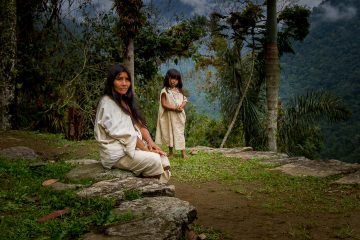 High in the Sierra Nevada de Santa Marta of northern Colombia, the Kogi people peaceably live and farm. Having isolated themselves in nearly inaccessible mountain hamlets for five hundred years, the Kogi retain the dubious distinction of being the only intact, pre-Columbian civilization in South America. As such, they are also rare representatives of a sustainable farming way of life that persists until the modern era. Yet, more than four decades ago, even they noticed that their highland climate was changing. The trees and grasses that grew around their mountain redoubt, the numbers and kinds of animals they saw, the sizes of lakes and glaciers, the flows of rivers—everything was changing. The Kogi, who refer to themselves as Elder Brother and understand themselves to be custodians of our planet, felt they must warn the world. So in the late 1980s, they sent an emissary to contact the documentary filmmaker, Alan Ereira of the BBC—one of the few people they’d previously met from the outside world. In the resulting film, From the Heart of the World: The Elder Brother’s Warning (1991), the Kogi Mamos (shamans) issue to us, their Younger Brother, a warning akin to that which the Union of Concerned Scientists would also later issue in their World Scientists’ Warning to Humanity (1997, with a second notice in 2017): that we must take heed of our damage to the planet; that if we don’t stop what we’re doing to it, we will destroy the world we know.
High in the Sierra Nevada de Santa Marta of northern Colombia, the Kogi people peaceably live and farm. Having isolated themselves in nearly inaccessible mountain hamlets for five hundred years, the Kogi retain the dubious distinction of being the only intact, pre-Columbian civilization in South America. As such, they are also rare representatives of a sustainable farming way of life that persists until the modern era. Yet, more than four decades ago, even they noticed that their highland climate was changing. The trees and grasses that grew around their mountain redoubt, the numbers and kinds of animals they saw, the sizes of lakes and glaciers, the flows of rivers—everything was changing. The Kogi, who refer to themselves as Elder Brother and understand themselves to be custodians of our planet, felt they must warn the world. So in the late 1980s, they sent an emissary to contact the documentary filmmaker, Alan Ereira of the BBC—one of the few people they’d previously met from the outside world. In the resulting film, From the Heart of the World: The Elder Brother’s Warning (1991), the Kogi Mamos (shamans) issue to us, their Younger Brother, a warning akin to that which the Union of Concerned Scientists would also later issue in their World Scientists’ Warning to Humanity (1997, with a second notice in 2017): that we must take heed of our damage to the planet; that if we don’t stop what we’re doing to it, we will destroy the world we know.
The Kogi warning, however, is couched in the language and metaphor of their own knowledge system. They speak of The Great Mother, who taught them “right from wrong,” and whose teachings still guide their lives. “The Great Mother talked and talked. The Great Mother gave us what we needed to live, and her teaching has not been forgotten right up to this day,” they tell us. It’s Younger Brother who is causing problems. “They are taking out the Mother’s heart. They are digging up the ground and cutting out her liver and her guts. The Mother is being cut to pieces and stripped of everything,” the Mamos scold. “So from today, stop digging in the Earth and stealing the gold. If you go on, the world will end. You are bringing the world to an end.” You can hear in their tone that it doesn’t occur to them that Younger Brother might not listen.
For the Kogi, gold is the blood of the Great Mother; it holds for them a value entirely apart from the way we value gold. For them, the wellbeing of the Great Mother is paramount, and they live now—as they always have—in service to her, our world. During the millennium before Columbus bumped into the Caribbean islands, the ancestors of the Kogi had created the complex, non-literate Tairona civilization, stretching from the Caribbean Sea up into the Sierras. They farmed and fished, their subsistence practices enmeshed within a sophisticated knowledge system that described the complex local ecology. They built cities of stone connected by roadways, marvels of engineering, working in league with what nature provided, rather than against it. Their several settlements were located within the different ecological zones of the diverse landscape, and each played its part in providing for their larger civilization. For example, the coastal Tairona fished and collected salt, which they shared with their sister settlements, from whom they received maize and other goods, each of which was produced within its own optimal ecozone, sustainably supporting a population of three hundred thousand people.
When the Spaniards arrived, they enslaved the coastal Tairona, as they did so many others, forcing them to produce gold. Many tried to escape to their cities in the mountains. But the upland Tairona Mamos sent them back, explaining that their way of life depended on the different products contributed by Tairona settlements in each zone; they would not survive as a people, if they abandoned the coast. So the coastal Tairona returned and put up with the abuses of the Spaniards for many years. This painful arrangement finally ended with the arrival of a Spanish governor who believed it best to exterminate the heathens. Survivors fled again to the remote cities of their rugged massif, where the Spanish couldn’t follow, and this time the Tairona could never go back. Without access to all the parts of their earlier networked system of production, the Tairona had to adjust, adapting some new foods and techniques gleaned from the Spanish in support of their balanced self-sufficiency. Their population crashed to less than a tenth of its earlier number, in what were undoubtedly horrific decades of hunger and loss. And they isolated themselves for nearly five hundred years.
***
It may seem a bit dramatic to say, as the Intergovernmental Panel on Climate Change (IPCC) did in their 2018 Special Report 1.5, that keeping global temperature rise to the “safe” limit of 1.5ºC “would require unprecedented transitions in all aspects of society.” Or that we need to radically transform our ways of life in order to live sustainably. Perhaps it feels overstated, because sustainability—the word, the concept—has been coopted for marketing purposes; it’s used to greenwash products or corporate images, to make us feel good about our choices or hopeful about new technologies. But the word actually has a real and terrifying meaning: that which is not sustainable, will come to an end. This is what the Kogi and the Alliance of World Scientists, in their own ways, both warn us about our modern world. But if the settled Tairona/Kogi farmers were able to live sustainability for over a thousand years, how did Younger Brother sink so deeply into un-sustainability?
The First Great Plot Twist in the Human Story
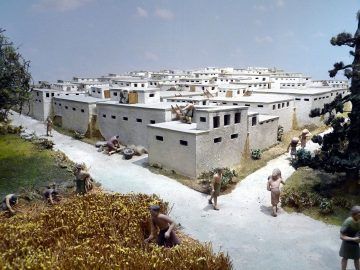 The first farmers we know of in the world lived in the eastern Mediterranean region less than ten thousand years ago. They became farmers by slow degrees, through a progression of choices that accrued over hundreds of preceding generations, leading them away from gathering and hunting a broad range of wild foods toward tending their own limited range of domesticated crops and herds instead. This was a truly momentous development in the human story, the first great plot twist: after hundreds of thousands of years of everybody following a relatively low-intensity, nomadic existence, some people decided to refashion the environment around them so that they could stay put while extracting what they needed from the land much faster than it could naturally regenerate.
The first farmers we know of in the world lived in the eastern Mediterranean region less than ten thousand years ago. They became farmers by slow degrees, through a progression of choices that accrued over hundreds of preceding generations, leading them away from gathering and hunting a broad range of wild foods toward tending their own limited range of domesticated crops and herds instead. This was a truly momentous development in the human story, the first great plot twist: after hundreds of thousands of years of everybody following a relatively low-intensity, nomadic existence, some people decided to refashion the environment around them so that they could stay put while extracting what they needed from the land much faster than it could naturally regenerate.
 Even more surprising, within a span of six thousand years after the onset of the Holocene, pockets of people all around the globe came up with the very same idea—farming—from China to New Guinea to Mesoamerica and elsewhere. From a handful of such nodes, farming—and seeds or cuttings for the limited suitable crops—spread rapidly to nearly engulf the globe. No one had ever tried farming until the Holocene, and suddenly it was everywhere. This isn’t random coincidence. During the long glacial phases of the past, the cold temperatures and low concentration of atmospheric carbon dioxide weren’t optimal for the plants best suited for agriculture, primarily cereals and pulses. During the previous warm interglacials, all people still remained within Africa, where there weren’t many suitable crop plants, nor yet enough people in any one area to provide the cooperative physical labor required for such an enterprise. But by the end of the last deep freeze, people had expanded across the globe and population densities had risen in some regions, alongside tremendous funds of knowledge about local environments. And then the climate warmed and stabilized long enough to enable a lifestyle transition as highly leveraged and vulnerable as farming.
Even more surprising, within a span of six thousand years after the onset of the Holocene, pockets of people all around the globe came up with the very same idea—farming—from China to New Guinea to Mesoamerica and elsewhere. From a handful of such nodes, farming—and seeds or cuttings for the limited suitable crops—spread rapidly to nearly engulf the globe. No one had ever tried farming until the Holocene, and suddenly it was everywhere. This isn’t random coincidence. During the long glacial phases of the past, the cold temperatures and low concentration of atmospheric carbon dioxide weren’t optimal for the plants best suited for agriculture, primarily cereals and pulses. During the previous warm interglacials, all people still remained within Africa, where there weren’t many suitable crop plants, nor yet enough people in any one area to provide the cooperative physical labor required for such an enterprise. But by the end of the last deep freeze, people had expanded across the globe and population densities had risen in some regions, alongside tremendous funds of knowledge about local environments. And then the climate warmed and stabilized long enough to enable a lifestyle transition as highly leveraged and vulnerable as farming.
During the Holocene, stable climatic conditions have persisted, with only minor fluctuations, for ten thousand years, allowing peoples to thrive in the same spot season through season, generation upon generation, century after century, sometimes for millennia. Without this stability, we likely would never have achieved our highly complex civilization. And this, in turn, changed everything. It directly and indirectly changed the very planet in a manner as profound as any geophysical phenomenon. It fundamentally changed human society and human possibility. But while we like to portray this journey as one of steady and unalloyed human progress, it certainly led us through periods of increased collective hardship, not to mention having triggered anthropogenic climate change and a global mass extinction event. We forget that for all the gains we have collectively made, we have also lost much in this transition.
The Thickening Plot
 The precise rate and route of agricultural development varied with local conditions around the globe. Thousands of years before the rise of agriculture, foragers everywhere had started practicing different forms of large-scale resource management: burning forests and grasslands to renew growth, create clearings, or hunt; translocating plant species; husbanding the growth of trees and other plants within natural patches of forest; and in some cases, domesticating plants through artificial selection. Through these activities—as well as hunting, sometimes to the point of species extinction, which can itself ripple into landscape changes (a phenomenon known as a trophic cascade)—human activities had already begun to change the planet. In some regions, foraging groups began to mix broader landscape management with gardening or farming, while remaining semi-nomadic, or while settling into permanent villages that yet resisted growing into larger towns and cities, thus retaining low population densities. Elsewhere, farming led directly to intense agricultural urbanization. In several places, the discovery of edible grass seeds—rye, wheat, rice, millet, sorghum, maize—seems to have led the turn toward more intensive agriculture. In Mesoamerica, nomadic foragers were domesticating squash and manioc for thousands of years, while practicing a less intensive system of land and resource management; only after they incorporated corn into their mix did they eventually settle and burgeon into the cities of the Olmecs and Mayans. In the New Guinea Highlands, where villagers primarily grew banana, taro, sago, yam, and sugarcane, they settled but never grew into cities.
The precise rate and route of agricultural development varied with local conditions around the globe. Thousands of years before the rise of agriculture, foragers everywhere had started practicing different forms of large-scale resource management: burning forests and grasslands to renew growth, create clearings, or hunt; translocating plant species; husbanding the growth of trees and other plants within natural patches of forest; and in some cases, domesticating plants through artificial selection. Through these activities—as well as hunting, sometimes to the point of species extinction, which can itself ripple into landscape changes (a phenomenon known as a trophic cascade)—human activities had already begun to change the planet. In some regions, foraging groups began to mix broader landscape management with gardening or farming, while remaining semi-nomadic, or while settling into permanent villages that yet resisted growing into larger towns and cities, thus retaining low population densities. Elsewhere, farming led directly to intense agricultural urbanization. In several places, the discovery of edible grass seeds—rye, wheat, rice, millet, sorghum, maize—seems to have led the turn toward more intensive agriculture. In Mesoamerica, nomadic foragers were domesticating squash and manioc for thousands of years, while practicing a less intensive system of land and resource management; only after they incorporated corn into their mix did they eventually settle and burgeon into the cities of the Olmecs and Mayans. In the New Guinea Highlands, where villagers primarily grew banana, taro, sago, yam, and sugarcane, they settled but never grew into cities.
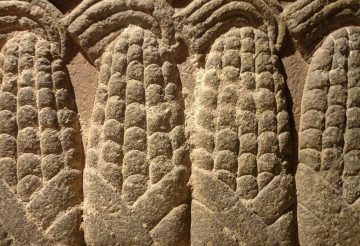 Nascent farming enterprises expanded over hundreds or thousands of years to incorporate larger areas under tillage and greater mastery of plant breeding and nurturing. In some regions, including Mesopotamia, the Indus Valley, eastern Africa, and China’s Yellow River region, people exercised tighter control over the lives of a few types of ungulates, including goats, cattle, and pigs. Eventually, in these and other loci around the world, farmers’ diets came to consist almost entirely of the plants and animals they had domesticated, superseding any reliance on wild foods. From eastern Africa, across Eurasia, in Mesoamerica and parts of South America, such fully agricultural polities mushroomed into cities housing tens of thousands of people as populations boomed.
Nascent farming enterprises expanded over hundreds or thousands of years to incorporate larger areas under tillage and greater mastery of plant breeding and nurturing. In some regions, including Mesopotamia, the Indus Valley, eastern Africa, and China’s Yellow River region, people exercised tighter control over the lives of a few types of ungulates, including goats, cattle, and pigs. Eventually, in these and other loci around the world, farmers’ diets came to consist almost entirely of the plants and animals they had domesticated, superseding any reliance on wild foods. From eastern Africa, across Eurasia, in Mesoamerica and parts of South America, such fully agricultural polities mushroomed into cities housing tens of thousands of people as populations boomed.
Denser living spurred advancing technologies for food planting, harvesting, processing, preservation, cooking, and storage; animal domestication and husbandry; metallurgy, first copper, then bronze, then iron; property regimes and homesteads; weapons and stratagems for highly organized warfare. By differing degrees and specifics across regions, urbanization also brought deepening social stratifications, including various forms of serfdom or peonage, specialized professions, and escalating patriarchal domination.
Through this transition, societies moving toward denser urbanization had traded the freedoms of nomadism for a slate of consequences they might not have chosen, had they been able to see where it would lead them. For most urbanizing individuals found themselves remaining their whole lives in one place, among dense throngs of people, heaps of waste, flatulent herds, mice and rats—enabling the rapid spread of infectious diseases, from malaria, rabies, and the plague to smallpox, flu, leprosy, and tuberculosis. But townsfolk also built ever sturdier shelters against the elements; they found safety and strength in large numbers, as well as a denser field of ideas and collaborations for innovation.
As settlements grew increasingly dense and complex, city-dwellers submitted their bodies and minds to the dictates of ever deepening social hierarchies, with all the psychological adjustments that entailed. Most of them were now actually spending more time working harder for the same calories and nutrition—or for less, depending upon one’s place in the social order—compared to their nomadic, foraging contemporaries, at great cost to their overall nutrition and health. They toiled, voluntarily or not, to build monumental works of art or engineering. They began to collect roomfuls of material possessions, maintain and guard them, covet those of others, and admire individuals who had collected the most and the finest. They discovered new modes of power and coercion, collective action and communal harmony. They learned to separate human society and existence from the rest of nature, and to esteem their growing distance from it. They refined linguistic scripts and preserved ideas by writing things down on durable materials to be read by others, even as they read the thoughts of others who had lived long ago or far away. Urban life enabled a completely novel human experience and a new range of stories—including all the familiar Iron Age tales that linger with us today as the foundational mythologies of the world’s most dominant religions—opening new fields of social imagination for what is possible and what is right, fundamentally altering our understanding of our place on the Earth and in the cosmos, our notions of wealth and poverty, our ideas of purpose and order.
Knowledge systems shifted to cover new social and material realities, at the expense of the nomad’s immersive knowledge of the natural world. As people domesticated animals, they forgot their broader understanding of the wilderness. Wherever agriculture became the singular mode of subsistence and populations boomed, people also soon resorted to redirecting water from rivers and destroying wetlands. They exhausted topsoils and created conditions that hastened erosion, spread monocultures and destroyed habitats. The resulting decline of local ecosystems drove a demand for higher yields from the farmers’ own crops and herds, in a feedback cycle promoting more intensive farming, greater population growth, and further environmental destruction. Local environments were strained in ways that had never before been felt upon the planet. As human societies grew denser, they intensified technological innovation, altering nature to favor their own near-term growth, oblivious to the long-term impact.
The Dropped Subplots
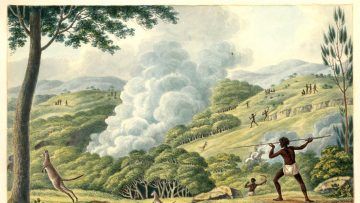 As I intimated at the start, this trajectory we’ve ultimately followed as a global civilization—toward increasing inequity, greater despoliation of the commons, and the eradication or oppressive control of natural life within our acculturated spaces—was not the only drama under the sun. A few farming societies followed alternate routes, though all of these are now marginalized or obliterated. The aggressive creep of our dominant model of extraction and growth, which seems to have arisen and spread from the first urbanized societies, requires ever more energy, land, and water to feed itself, ultimately, directly or indirectly, devouring all others.
As I intimated at the start, this trajectory we’ve ultimately followed as a global civilization—toward increasing inequity, greater despoliation of the commons, and the eradication or oppressive control of natural life within our acculturated spaces—was not the only drama under the sun. A few farming societies followed alternate routes, though all of these are now marginalized or obliterated. The aggressive creep of our dominant model of extraction and growth, which seems to have arisen and spread from the first urbanized societies, requires ever more energy, land, and water to feed itself, ultimately, directly or indirectly, devouring all others.
It appears, for instance, that the peoples of the Indus Valley Civilization (IVC), which flourished across what is today eastern Pakistan and northwestern India, between six and four thousand years ago, avoided developing a highly stratified society, compared to the Mesopotamians, with whom they regularly traded. Although much remains mysterious about the IVC, there’s no evidence that their city-states maintained standing armies, that their leaders hoarded great wealth, or that their populace toiled under the coercion of hallowed dynasties in the usual manner of similar polities across the globe. The eventual demise of their civilization may have been due either to seismic events that shifted the courses of rivers on which they depended, or to such enlargement of their urban population that they struggled to feed themselves when the local climate became drier, forcing them to abandon their cities. But their example still suggests it’s possible to create more egalitarian settled societies than what we might presume, based around a wholly different set of values.
Across Australia, Aboriginal and Torres Straits Islander peoples are known to have domesticated at least nineteen indigenous crops, in some cases planting them over miles at a stretch, without the use of animal labor, metal plows, or water diversions. Though some groups were fully sedentary, an ongoing reliance upon wild foods required continued and sustainable landscape management and modest human population sizes; their villages never grew into cities, remaining at fewer than a thousand people per settlement. The Haudenosaunee (Iroquois Confederacy) of North America, built fully sedentary villages of under a thousand, limiting environmental damage through a practice of rotating land use and other strategic management. Their larger villages, housing up to several thousand people, slowly migrated to new locations every few decades, re-wilding their former village sites.
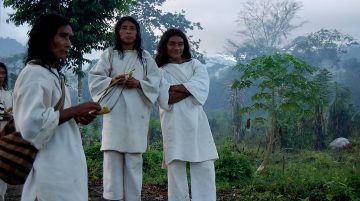 Like the Tairona (and later Kogi), the Haudenosaunee also never abandoned their understanding of and concern for environmental balance, which they realized underwrote their flourishing. In pre-Colonial times, neither had enslaved animals for food or labor, practiced mono-culture farming, nor diverted rivers. Neither developed dominant patriarchal institutions or the deep social hierarchies found among agricultural societies whose populations were concentrated into dense city-states. Despite being partly or fully sedentary, they continued to rely upon wild resources and to cultivate sustainable farming and landscape management practices. The Haudenosaunee abided by a core principle they call the Seventh Generation, according to which all major decisions taken must allow sustainability in consideration of those yet unborn. Thus, they eschewed short-term enrichment schemes causing despoliations that could threaten their future wellbeing. The Kogi are guided by the principle that whenever something is taken from the Earth, something must also be given back; they speak of making “payments” to the Earth.
Like the Tairona (and later Kogi), the Haudenosaunee also never abandoned their understanding of and concern for environmental balance, which they realized underwrote their flourishing. In pre-Colonial times, neither had enslaved animals for food or labor, practiced mono-culture farming, nor diverted rivers. Neither developed dominant patriarchal institutions or the deep social hierarchies found among agricultural societies whose populations were concentrated into dense city-states. Despite being partly or fully sedentary, they continued to rely upon wild resources and to cultivate sustainable farming and landscape management practices. The Haudenosaunee abided by a core principle they call the Seventh Generation, according to which all major decisions taken must allow sustainability in consideration of those yet unborn. Thus, they eschewed short-term enrichment schemes causing despoliations that could threaten their future wellbeing. The Kogi are guided by the principle that whenever something is taken from the Earth, something must also be given back; they speak of making “payments” to the Earth.
While there is no perfect society nor any ancient system that can today sustain eight billion people on a planet with a rapidly collapsing biome, surely there are lessons here, among these paths not taken by the juggernaut of our modern civilization—if not to be emulated precisely, at least to remind us how broad is our potential. Such examples might help open our imagination to new possibilities for a future under the changing constraints of the planet. There’s no question we have much to learn about conservation and sustainability from peoples who have retained their close-to-nature ways of life. Even the IPCC promotes restoring indigenous land rights as a way to help mitigate climate change, recognizing that indigenous peoples manage their lands more sustainably than the rest of us. Any attempt to limit global temperature rise and preserve as much as we can of the existing biome may depend upon us adjusting our dominant paradigms to parallel theirs, even as we use new tools and methods to achieve similar ends.
Another Plot Twist?
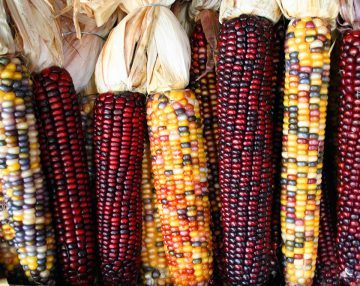 The winding road that lead to the modern world—all that was lost and all that was gained along the way—demonstrates that our current planetary predicament isn’t a superficial modern phenomenon with a superficial remedy. Most certainly, ecological destruction and global warming have been egregiously accelerated over the past two hundred and fifty years, as the mining and mass burning of fossil fuels have inflamed our hyper-growth. But our modern predicament is merely the logical conclusion of a far older trend that begins with that fundamental shift in the human experience permitted by the Holocene: away from being subject to nature, toward the control of nature; away from balance, toward growth. It flows directly from a chain of choices made in pursuit of short-term prosperity, lured by immediate gratification, status-seeking, and other such inducements to which most humans seem especially vulnerable. Our predicament follows from the collective loss of our visceral understanding of nature and is enabled by the advancement of an alternate constellation of beliefs—stories that place humanity outside nature and valorize our acquisition of material goods and technological power as their own ends.
The winding road that lead to the modern world—all that was lost and all that was gained along the way—demonstrates that our current planetary predicament isn’t a superficial modern phenomenon with a superficial remedy. Most certainly, ecological destruction and global warming have been egregiously accelerated over the past two hundred and fifty years, as the mining and mass burning of fossil fuels have inflamed our hyper-growth. But our modern predicament is merely the logical conclusion of a far older trend that begins with that fundamental shift in the human experience permitted by the Holocene: away from being subject to nature, toward the control of nature; away from balance, toward growth. It flows directly from a chain of choices made in pursuit of short-term prosperity, lured by immediate gratification, status-seeking, and other such inducements to which most humans seem especially vulnerable. Our predicament follows from the collective loss of our visceral understanding of nature and is enabled by the advancement of an alternate constellation of beliefs—stories that place humanity outside nature and valorize our acquisition of material goods and technological power as their own ends.
Our modern economies of efficient extraction and growth have no doubt provisioned a wealth of “affordable,” labor- and life-saving devices and products. I cannot regret the knowledge and security and longevity all this has made possible for most people alive today. Yet nor can I ignore the unintended consequences of this revolution, which has so changed our world—both our subjective experiences of it and its geophysical reality—that the world we’ve known and mastered now crumbles away within our grip, as species die off en masse and global temperatures dangerously rise. But this is not the end of our story of discovery. And we are not limited to doubling-down on the choices that have led us here. There is greater possibility within the human experience than those we acknowledge in the paradigms of the modern world.
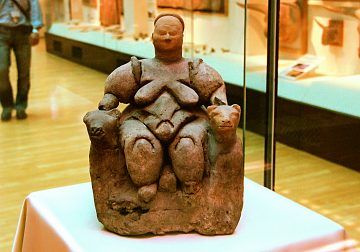 Like our semi-nomadic forebears who must have looked upon the first sheltering walls they had built and begun to imagine new possibilities for how to live and understand themselves, I wonder if we now face another plot twist in the story we have been telling ourselves for decades, if not centuries, about who we are, where we’re going, and how we ought to live. For we are now called upon to make different choices, to end the fossil-fuel economy that undergirds our way of life, and to leave one-third to one-half of the planet fallow for re-wilding. Such a transformation may entail a shift in human social imagination and organization as profound as that which took us from foraging villagers to agricultural city-dwellers. Like that earlier transition, this one won’t fully play out within a single generation or even a few. And it will require us to use all the knowledge we’ve acquired of our physical and social worlds—all the half-forgotten lessons of our many-storied human experience. I don’t believe we can succeed if we limit ourselves to what we think we know from inhabiting landscapes of concrete and plastic alone. We must question everything. We must question the dominant stories we tell ourselves, especially those that promise to maintain things as they are.
Like our semi-nomadic forebears who must have looked upon the first sheltering walls they had built and begun to imagine new possibilities for how to live and understand themselves, I wonder if we now face another plot twist in the story we have been telling ourselves for decades, if not centuries, about who we are, where we’re going, and how we ought to live. For we are now called upon to make different choices, to end the fossil-fuel economy that undergirds our way of life, and to leave one-third to one-half of the planet fallow for re-wilding. Such a transformation may entail a shift in human social imagination and organization as profound as that which took us from foraging villagers to agricultural city-dwellers. Like that earlier transition, this one won’t fully play out within a single generation or even a few. And it will require us to use all the knowledge we’ve acquired of our physical and social worlds—all the half-forgotten lessons of our many-storied human experience. I don’t believe we can succeed if we limit ourselves to what we think we know from inhabiting landscapes of concrete and plastic alone. We must question everything. We must question the dominant stories we tell ourselves, especially those that promise to maintain things as they are.
[Part 6, Modern Myths of Human Power]
Earlier Essays in this Series
1 What We Talk About When We Talk About The Weather
Images
1. Kogi woman and child. Creative Commons.
2. Model of Çatalhöyük, an Anatolian settlement that flourished about 7,000 BCE. Foraging villagers began to mix farming into their subsistence strategies and then to domesticate wheat. Creative Commons.
3. Tikal, a Mayan agricultural city-state that flourished about two thousand years ago, but was eventually abandoned and covered by jungle. Creative Commons.
4. Several varieties of rice that have been domesticated in different parts of the world. Creative Commons.
5. Ancient Mesoamerican carving of maize. Creative Commons.
6. Painting of Australian Aboriginal people burning grassland to hunt kangaroos in New South Wales. Painted by Joseph Lycett, 1817. National Library of Australia.
7. Kogi Mamos. Creative Commons.
8. Traditional varieties of maize. Creative Commons.
9. Woman of Çatalhöyük, (about 5500-6000 BC), today in Museum of Anatolian Civilizations in Ankara. Creative Commons.
